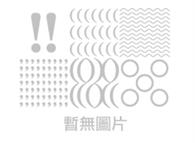
7
0
0
0
0
Laser heat-mode lithography : principle and methods
- 作者: Wei, Jingsong, author.
- 其他作者:
- 其他題名:
- Springer series in materials science ;
- 出版: Singapore : Springer Singapore :Imprint: Springer
- 叢書名: Springer series in materials science,volume 291
- 主題: Lithography. , Surface and Interface Science, Thin Films. , Optics, Lasers, Photonics, Optical Devices. , Microwaves, RF and Optical Engineering. , Optical and Electronic Materials.
- ISBN: 9789811509438 (electronic bk.) 、 9789811509421 (paper)
-
FIND@SFXID:
 CGU
CGU
- 資料類型: 電子書
- 內容註: Current status of lithography -- Principles of laser heat-mode lithography and thermal diffusion -- Laser heat-mode maskless lithography system -- Manipulation of thermal diffusion channels -- Laser heat-mode nanolithography on phase-change thin films -- Direct laser heat-mode nanopatterning on metallo-organic compound thin films -- Laser heat-mode patterning of transparent thin films -- Laser heat-mode grayscale image lithography -- Patterns transfer processes and applications.
- 摘要註: This book provides a systematic description and analysis of laser heat-mode lithography, addressing the basic principles, lithography system, manipulation of feature size, grayscale lithography, resist thin films, and pattern transfer, while also presenting typical experimental results and applications. It introduces laser heat-mode lithography, where the resist thin films are essentially an opto-thermal response to the laser beam with changeable wavelength and are not sensitive to laser wavelength. Laser heat-mode lithography techniques greatly simplify production procedures because they require neither a particular light source nor a particular environment; further, there are no pre-baking and post-baking steps required for organic photoresists. The pattern feature size can be either larger or smaller than the laser spot by adjusting the writing strategy. The lithographic feature size can also be arbitrarily tuned from nanoscale to micrometer without changing the laser spot size. Lastly, the line edge roughness can be controlled at a very low value because the etching process is a process of breaking bonds among atoms. The book offers an invaluable reference guide for all advanced undergraduates, graduate students, researchers and engineers working in the fields of nanofabrication, lithography techniques and systems, phase change materials, etc.
-
讀者標籤:
- 系統號: 005468109 | 機讀編目格式
館藏資訊
